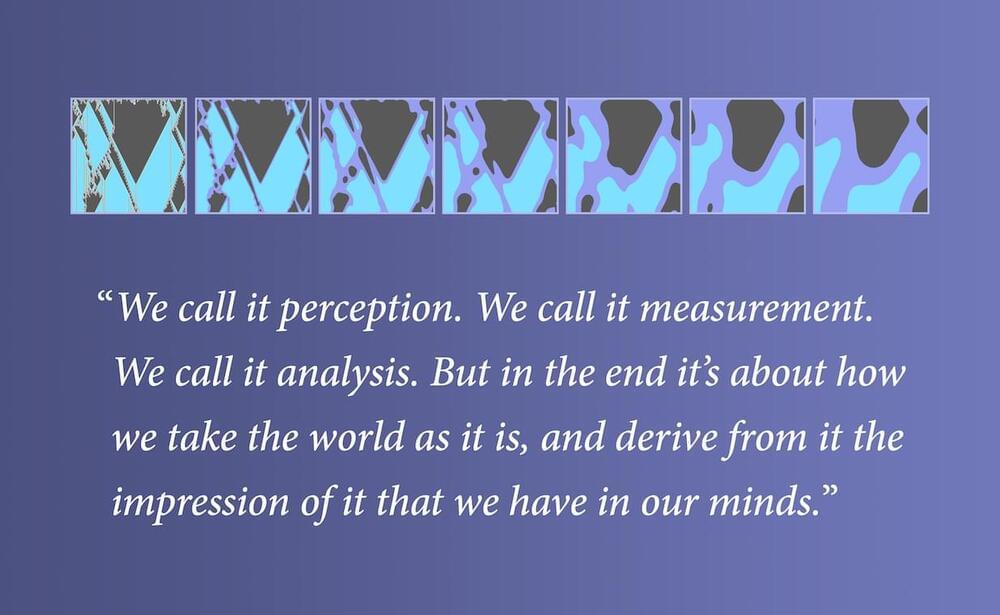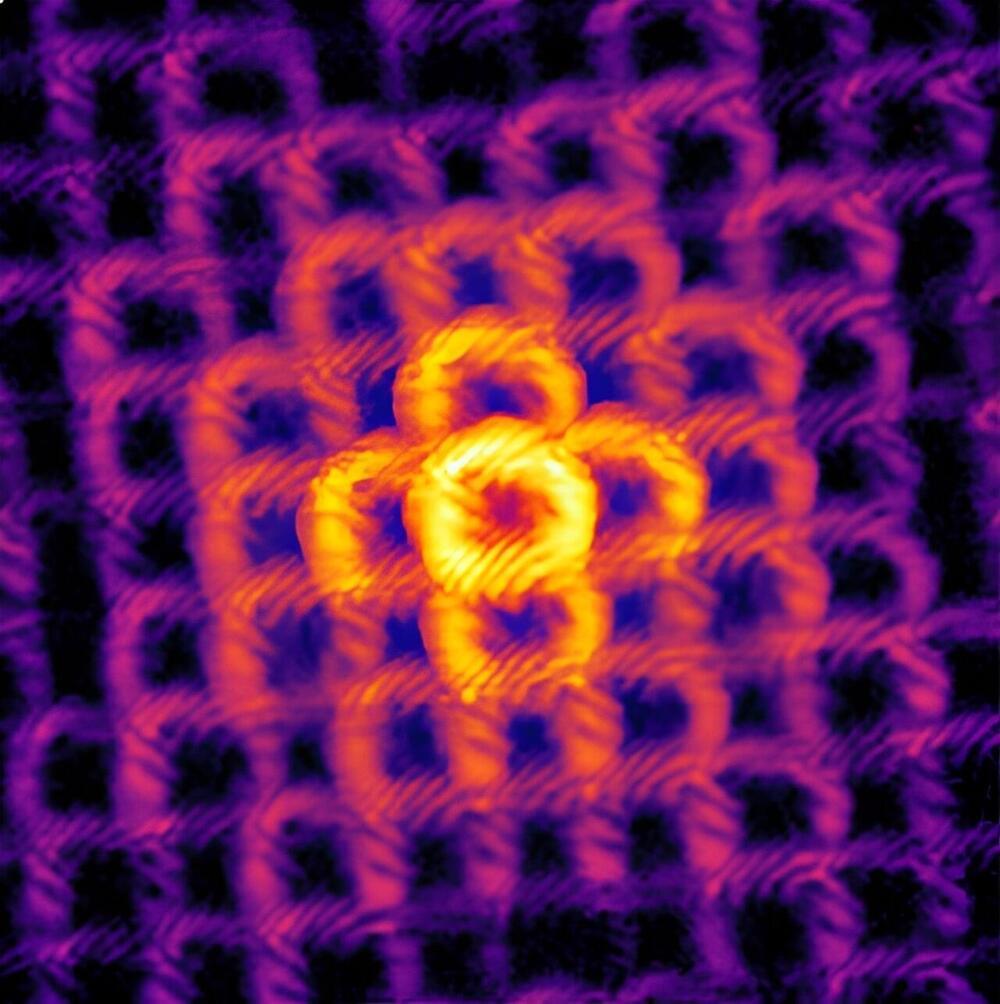Start speaking a new language in 3 weeks with Babbel 🎉 Get 60% OFF your subscription during their Black Friday sale Here: https://go.babbel.com/t?bsc=1200m6…
Category: physics – Page 142

Observer Theory
Philosophy of science.
We call it perception. We call it measurement. We call it analysis. But in the end it’s about how we take the world as it is, and derive from it the impression of it that we have in our minds.
We might have thought that we could do science “purely objectively” without any reference to observers or their nature. But what we’ve discovered particularly dramatically in our Physics Project is that the nature of us as observers is critical even in determining the most fundamental laws we attribute to the universe.
But what ultimately does an observer—say like us—do? And how can we make a theoretical framework for it? Much as we have a general model for the process of computation —instantiated by something like a Turing machine —we’d like to have a general model for the process of observation: a general “observer theory”

Space telescope spots ‘superflares’ 10,000 times brighter than Sun — Study
Scientists have developed a model to better understand the physics of the powerful superflares emitted by stars far beyond our solar system.
Solar flares, which are rapid and strong bursts of energy and radiation that originate from the Sun’s surface, are known to be emitted into space by our Sun.
NASA’s Kepler and TESS missions, however, have discovered several stars may produce superflares that are 100–10,000 times brighter than those emitted by our Sun.
Prepare Our Kids for Life, Not Standardized Tests | Ted Dintersmith | TEDxFargo
As a leading venture capitalist, Ted Dintersmith lived and breathed the world of innovation. He has seen first-hand how quickly automation is eliminating the structured jobs in our economy, as well as the opportunities for young adults who are bold, creative, and entrepreneurial. As Ted shifted his focus to the future of our schools, he realized that the core purpose of our schools has been lost in a wave of testing, data, and accountability. In this talk, Ted underscores the potential for our kids and our country if we educate to our innovative and creative strengths, and trust our schools and teachers to prepare our kids for life, instead of for standardized tests.
After a twenty-five year career in venture capital, Ted Dintersmith is now focused on issues at the intersection of innovation and education. In the fall of 2012, Ted served as part of the delegation representing the United States at the United Nations General Assembly, where he focused on global education and entrepreneurship. The first two films he executive produced – Most Likely To Succeed and The Hunting Ground – premiered at Sundance, 2015. His website http://www.edu21c.com describes his initiatives and he can be followed @dintersmith.
Ted is a Partner Emeritus with Charles River Ventures, a leading early-stage venture capital firm. Independent industry analysts ranked Ted as the top-performing venture capitalist in the United States for the 1995–99 period. Ted earned a Ph.D. in Engineering from Stanford University, and his undergraduate degree from the College of William and Mary, where he earned High Honors in Physics and English.
This talk was given at a TEDx event using the TED conference format but independently organized by a local community.
How the Media Broke the World
💥Join us on our Journey to 1 Million Subscribers💥 Liv Boeree is a British science communicator, television presenter and former professional poker player. She is a World Series of Poker and European Poker Tour champion, and is the only female player in history to have won both a WSOP bracelet and an EPT event. She has a degree in astrophysics and uses her YouTube channel @LivBoeree to discuss science, game theory, probabilities, extinction risk and AI.
Crisis in Cosmology: New Study Exacerbates Expansion Rate Disagreement
The current measurements of the expansion rate of the universe are in disagreement, leading to a crisis in cosmology and the need for renewed research efforts into new physics and a new model of the universe.
Questions to inspire discussion.
What is the crisis in cosmology?
—The crisis in cosmology refers to the disagreement between measurements of the expansion rate of the universe, leading to the need for renewed research efforts into new physics and a new model of the universe.

Black holes really just ever-growing balls of string, researchers say
Black holes aren’t surrounded by a burning ring of fire after all, suggests new research.
Some physicists have believed in a “firewall” around the perimeter of a black hole that would incinerate anything sucked into its powerful gravitational pull.
But a team from The Ohio State University has calculated an explanation of what would happen if an electron fell into a typical black hole, with a mass as big as the sun.

Gravitational waves rippling from black hole merger could help test general relativity
Scientists have discovered gravitational waves stemming from a black hole merger event that suggest the resultant black hole settled into a stable, spherical shape. These waves also reveal the combo black hole may be much larger than previously thought.
When initially detected on May 21, 2019, the gravitational wave event known as GW190521 was believed to have come from a merger between two black holes, one with a mass equivalent to just over 85 suns and the other with a mass equivalent to about 66 suns. Scientists believed the merger therefore created an approximately 142 solar mass daughter black hole.
Yet, newly studied spacetime vibrations from the merger-created black hole, rippling outward as the void resolved into a proper spherical shape, seem to suggest it’s more massive than initially predicted. Rather than possess 142 solar masses, calculations say it should have a mass equal to around 250 times that of the sun.

Google says new AI model Gemini outperforms ChatGPT in most tests
Google has unveiled a new artificial intelligence model that it claims outperforms ChatGPT in most tests and displays “advanced reasoning” across multiple formats, including an ability to view and mark a student’s physics homework.
Gemini is being released in form of upgrade to Google’s chatbot Bard but not yet in UK or EU.

‘Doughnut’ beams help physicists see incredibly small objects
In a new study published in Optica, researchers at the University of Colorado Boulder have used doughnut-shaped beams of light to take detailed images of objects too tiny to view with traditional microscopes.
The new technique could help scientists improve the inner workings of a range of “nanoelectronics,” including the miniature semiconductors in computer chips. The discovery was also highlighted in a special issue of Optics & Photonics News.
The research is the latest advance in the field of ptychography, a difficult-to-pronounce (the “p” is silent) but powerful technique for viewing very small things. Unlike traditional microscopes, ptychography tools don’t directly view small objects. Instead, they shine lasers at a target and then measure how the light scatters away—a bit like the microscopic equivalent of making shadow puppets on a wall.